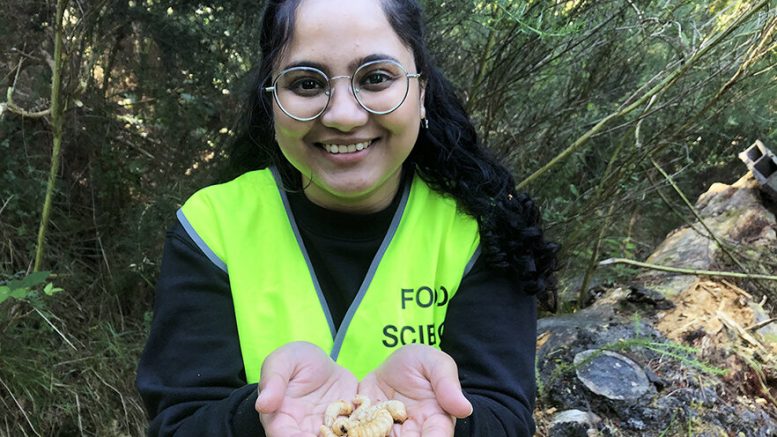Huhu grubs have long been treasured as a traditional food source, and their nutritional worth has now been studied for the first time by University of Otago academics.
Ruchita Rao Kavle, a Food Science Ph.D. student, investigated the mineral and macronutrient composition of huhu grubs (Prionoplus reticularis larvae), and the results were recently published in the International Journal of Food Science and Technology.
According to Miss Rao Kavle, the study revealed that huhu grubs had a high-fat content, which is what they’ve been known for in the past, but it was the high quantities of protein that really jumped out.
«Protein content ranged from 26.2 percent to 30.5 percent across the four phases of huhu growth, which is high when compared to other typical protein sources including beef (21 percent), lamb (20.3 percent), chicken (17.4 percent), soy (13 percent), and chickpeas» (20.5 percent).
«We also discovered that the grubs were high in key elements that play important roles in human health and nutrition, with manganese, magnesium, phosphorus, iron, copper, and zinc being the most plentiful,» she says.
The research was conducted on wild huhu grubs obtained from a pine-forested site in Dunedin at four different developmental stages of their life cycle.
Miss Rao Kavle claims that based on the findings, a 60kg person would need roughly 170g of huhu, or about 75 huhu grubs, to achieve the same daily protein need as 230g of beef.
«Huhu requires a smaller amount of consumption than beef, yet some individuals might find eating 75 grubs repulsive.»
Miss Rao Kavle’s research also looks into ways to turn the grubs into more edible forms like flour and meals.
Dr. Dominic Agyei, the study’s supervisor and co-author, said the research «brings scientific proof to highlight the nutritional value of the traditional food source.»
He claims that, despite the fact that huhu grubs are not commercially available in New Zealand, there is a growing interest in food sustainability, alternative proteins, and the need to diversify food sources.
«There is a growing interest in indigenous foods, notably their distinct nutritional and physiological qualities, as well as alternative proteins. «This research on the huhu builds on previous work we’ve done on the larvae of various edible insects, such as mealworms and black soldier flies,» adds Dr. Agyei.
The study found that wild-harvested huhu from New Zealand is healthy and safe to eat, but the authors caution that, like with most foods, moderation is advised, and the significance of variety and balanced diets cannot be overstated.






Be the first to comment on "For the first time, the nutritional value of huhu grubs was determined"